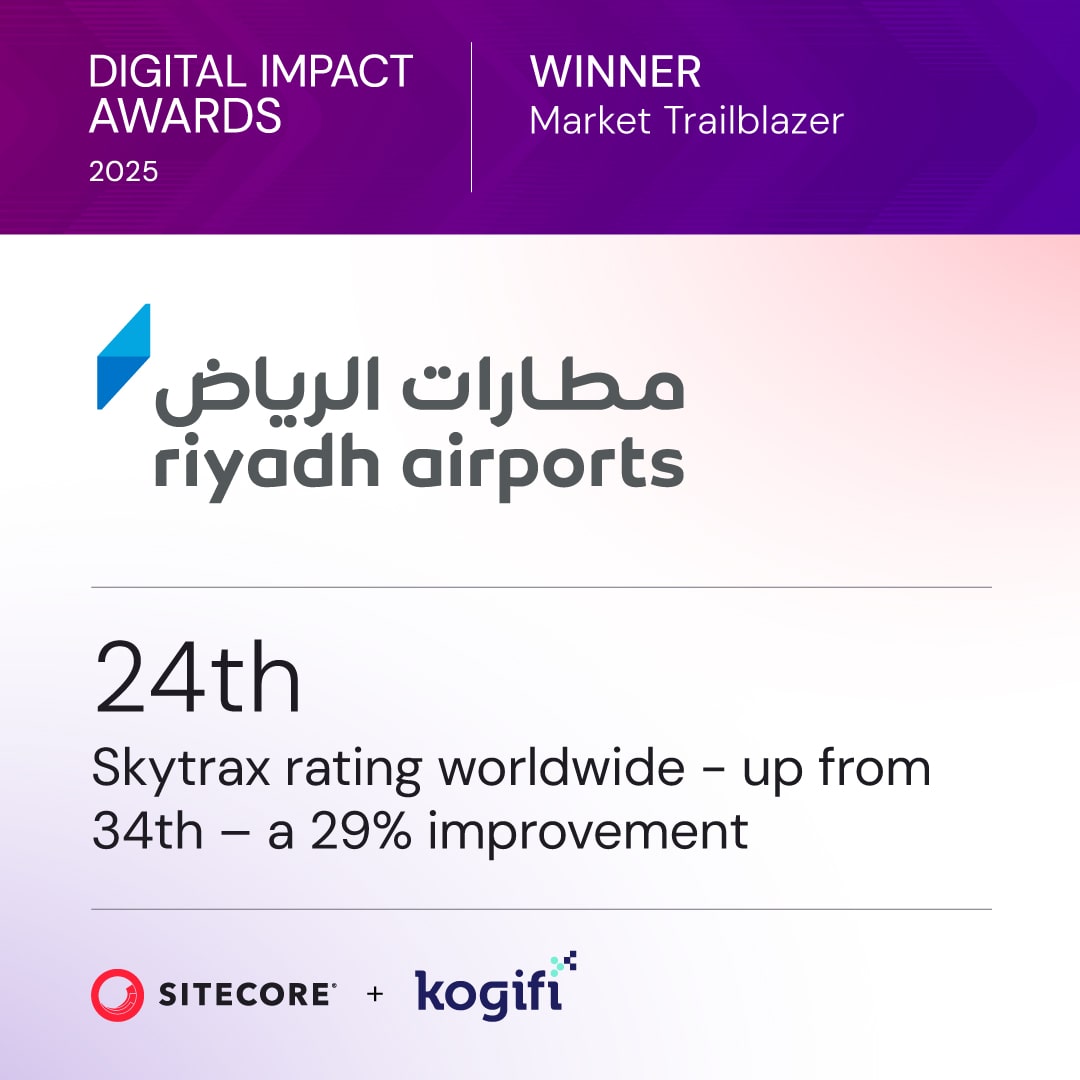Choosing a CMS (Content Management System) is a major decision for your business. It impacts your budget, scalability, and ability to deliver content effectively. The two main options are:
- Open Source CMS (e.g., WordPress, Drupal): Free to use, highly customizable, and supported by a community. Ideal for flexibility but requires technical expertise.
- Proprietary CMS (e.g., Adobe Experience Manager, Sitecore): Paid solutions with vendor support and enterprise-grade features. Better for businesses needing structured support but less customizable.
Key Differences
- Cost: Open source is free to start but may require investment in technical resources. Proprietary has upfront licensing fees and predictable costs.
- Customization: Open source allows extensive changes; proprietary is limited to vendor-approved options.
- Support: Open source relies on community forums; proprietary offers dedicated vendor backing.
- Scalability: Both can scale, but proprietary upgrades can be costly.
Quick Comparison
| Factor | Open Source CMS | Proprietary CMS |
|---|---|---|
| Cost | Free to start | High upfront fees |
| Customization | Highly flexible | Limited by vendor |
| Support | Community-driven | Vendor-provided |
| Scalability | Flexible scaling | May require costly upgrades |
Your choice depends on your goals, budget, and technical capabilities. Open source works well for businesses prioritizing control and cost savings, while proprietary suits enterprises needing vendor support and ready-made solutions.
Choosing the Perfect Content Management System (CMS) for your Website Project: An Ultimate Guide
Open Source vs. Proprietary CMS: The Basics
Grasping the core differences between open source and proprietary CMS platforms is essential when deciding which option best suits your business needs. At the heart of these two approaches lies the distinction in control and flexibility.
What Is an Open Source CMS?
An open source CMS is a content management system where the source code is publicly accessible. This openness creates a collaborative environment where developers from around the world contribute to enhancing the platform.
"An open-source CMS is a public, free content management system developed by a community." - Mitch Woite, J. Fitzgerald Group
Platforms like WordPress, Drupal, and Joomla are prime examples of open source CMS options. Because their source code is available to everyone, you can customize nearly every aspect of these platforms. This allows businesses to tailor the system to their exact needs, add unique features, and integrate seamlessly with other third-party tools. Essentially, open source CMS platforms offer the freedom to build something entirely your own.
This high level of flexibility stands in stark contrast to the more rigid structure of proprietary CMS solutions.
What Is a Proprietary CMS?
A proprietary CMS operates on a closed, licensed model. The software is owned by a specific company or individual, and users must adhere to the restrictions outlined in the licensing agreement. Unlike open source platforms, the source code is not publicly available, which limits how much you can modify or customize the system.
"A proprietary CMS is a software platform owned and controlled by a company. Its users need to purchase licenses or subscriptions for access and updates. It typically offers limited customization compared to open-source CMS, with restricted access to the source code." - Kanopi Studios
Examples of proprietary CMS platforms include Sitecore and Adobe Experience Manager. These systems are designed to meet specific enterprise requirements and often come with advanced features tailored for large-scale operations. However, they also come with a price tag - users must pay for licenses and ongoing fees.
One major downside of proprietary CMS platforms is the control retained by the vendor. The vendor dictates updates, features, and the overall direction of the platform. This dependency can pose challenges if the vendor decides to change their strategy or discontinue support. While proprietary platforms often include dedicated customer support, they limit customization, leaving businesses at the mercy of the vendor’s roadmap.
For enterprises seeking a ready-made, plug-and-play solution, proprietary CMS platforms may be appealing. However, they remain worlds apart from the customizable and open nature of open source systems.
What to Consider When Choosing a CMS
Choosing the right CMS is a big decision that can shape your digital strategy for years to come. To make the best choice, you'll need to weigh several key factors, from aligning with business goals to evaluating technical and budgetary requirements.
Setting Your Business Goals
The first step is to ensure the CMS aligns with your organization's objectives. Whether you're focused on increasing sales, attracting new members, improving user experience, or delivering dynamic content, your CMS should support these goals directly.
Think about what you need the CMS to do. Is it just a tool to manage content, or are you looking for advanced features like personalization and automation? To simplify the decision-making process, create a list of requirements from all departments. For example, marketing may prioritize scheduling tools, while IT might focus on security and system compatibility. A decision matrix can help rank and align these priorities across teams.
Finally, factor in scalability. Choose a CMS that not only meets your immediate needs but can also grow with your business. Once you’ve aligned your goals, it’s time to consider the financial side.
Working Within Your Budget
Budget planning goes beyond the initial cost. You'll need to account for ongoing expenses like hosting, support, and customization. Proprietary platforms often come with licensing fees, while open-source options might require more technical resources.
"When it comes to choosing between open-source & proprietary CMS platforms, it really depends on need & priorities. From my experience working with different organizations, a decision is usually based on factors like flexibility, security, or sustainability in the long run."
– Ila Bandhiya, Senior Digital Marketer at Middleware.io
Each option has its trade-offs. Open-source platforms may offer long-term savings but often require technical expertise for setup and maintenance. Proprietary solutions, on the other hand, can add up quickly with subscription fees and per-user costs, especially for larger teams.
With your financial constraints in mind, the next step is to ensure the CMS meets your technical requirements.
Checking Technical Requirements
Your CMS should integrate seamlessly with your existing systems and be capable of handling your growing content needs. Whether it’s compatibility with programming languages, databases, or other tools, technical fit is critical.
Security is another top priority. Look for features like data encryption, strong access controls, and compliance with industry standards. Scalability is equally important - your CMS should be able to handle increased traffic and content over the next few years without performance issues.
To avoid surprises, review your current content workflows and consult with your marketing, IT, and digital teams. This collaboration ensures the CMS aligns with your operational and technical needs.
Planning for Support and Maintenance
Support and maintenance can make or break your CMS experience. Open-source platforms often come with community forums and documentation, though you can purchase additional support if needed. However, the quality of these resources can vary, so evaluate them carefully.
Proprietary platforms usually include vendor support, but the level of service depends on your package. While having a single point of contact can be convenient, it also means you’re reliant on the vendor’s responsiveness and expertise.
If your team lacks technical expertise, the robust support offered by proprietary solutions might justify the extra cost. On the flip side, if you have a skilled in-house team, the flexibility of an open-source platform could be a better fit.
Lastly, prioritize a CMS that ensures fast loading times and optimized performance. These factors not only improve user satisfaction but also boost your SEO efforts. Regular maintenance and optimization are essential to keep everything running smoothly.
Open Source vs. Proprietary CMS: Side-by-Side
Let’s break down the advantages and challenges of open source and proprietary CMS platforms to help you decide which one aligns better with your organization’s goals.
Open Source CMS: Pros and Cons
Open source CMS platforms are known for their flexibility and ability to be customized to meet specific needs. With open code, developers and contributors can continuously review and improve the platform, creating a collaborative environment that helps identify and address vulnerabilities. This community-driven model often leads to rapid advancements and strengthened security.
Another major plus is cost. Open source platforms typically don’t require licensing fees, which can significantly reduce upfront expenses. For example, WordPress - an open source giant - powers about 62.7% of all websites, showcasing its popularity as a budget-friendly option.
That said, open source platforms come with their own challenges. Their openness can make them more vulnerable to security threats, and managing updates, patches, and overall maintenance becomes your team’s responsibility. Additionally, support mainly comes from community forums and user-generated resources, which might not always provide the quick, reliable help you need during a crisis.
Proprietary CMS: Pros and Cons
Proprietary CMS platforms shine when it comes to structured support and maintenance.
A standout feature is the dedicated customer support provided by the vendor. Vendors typically assist with implementation, troubleshooting, and regular updates, ensuring the platform remains stable and secure. This kind of support can be a lifesaver for organizations lacking in-house technical expertise.
These platforms also undergo rigorous testing and frequent updates to maintain security. However, the benefits come at a price - literally. Proprietary CMS options tend to have higher initial costs due to licensing fees, and customization is often limited to what the vendor allows. Additionally, because the code is closed, vulnerabilities may not be as transparent, and organizations become dependent on the vendor for updates and modifications.
To simplify these differences, here’s a side-by-side comparison:
Comparison Chart: Open Source vs. Proprietary CMS
| Factor | Open Source CMS | Proprietary CMS |
|---|---|---|
| Initial Cost | Low (no licensing fees) | High (includes licensing and subscription fees) |
| Ongoing Costs | Variable (depends on customization and maintenance) | Predictable (often bundled with the subscription) |
| Customization | Extensive, highly flexible | Limited to vendor-approved options |
| Support | Community-driven forums and resources | Dedicated vendor support |
| Security | Transparent code for community review | Vendor-managed with regular patches |
| Maintenance | Handled by the user | Managed entirely by the vendor |
| Scalability | Highly scalable (e.g., Drupal for large enterprises) | May require costly upgrades to scale |
| Vendor Dependency | Independent operation | Full reliance on the vendor |
Looking at market trends, WordPress leads the pack, powering roughly 63.5% of all CMS-driven websites. In contrast, proprietary enterprise platforms like Adobe Experience Manager and Sitecore each account for less than 1% of the market. This demonstrates that open source solutions are versatile enough for a broad range of organizations, while proprietary options are typically tailored for specific enterprise needs.
This breakdown highlights the key trade-offs, helping you weigh the pros and cons as you choose the right CMS for your organization.
sbb-itb-91124b2
When to Use Each Type of CMS
Choosing the right CMS for your organization depends on aligning its features with your specific needs. Below, we break down scenarios where each type of CMS can be the best fit.
When Open Source CMS Makes Sense
If your business requires extensive customization and you have access to skilled developers, an open source CMS can be a powerful tool. These platforms, like WordPress, Drupal, and Joomla, allow you to tweak and tailor your digital environment to meet unique needs. For businesses aiming to create complex e-commerce sites, content-heavy platforms, or unique user experiences, the ability to directly modify source code is a major advantage.
Budget-conscious organizations often lean toward open source CMS options because they eliminate upfront licensing fees. The core functionality is free, and you can scale your investment by adding paid plugins and themes as needed. This makes it an attractive option for startups or businesses looking to grow gradually.
However, it's worth noting that an open source CMS requires a dedicated technical team. These platforms need regular maintenance, security updates, and customizations, so having in-house developers or access to skilled professionals is essential.
Open source CMS platforms are also ideal for businesses operating in fast-paced industries where adaptability is crucial. Thanks to active developer communities, platforms like WordPress and Drupal often roll out updates and security patches faster than proprietary systems. This responsiveness can be a significant advantage for organizations needing to pivot quickly.
When Proprietary CMS Makes Sense
Proprietary CMS platforms shine in scenarios where reliability and professional support are non-negotiable. If your organization lacks in-house technical resources or prefers to focus on core operations rather than managing a CMS, proprietary solutions can provide a more streamlined experience.
These systems are particularly beneficial for enterprise-level organizations with strict compliance and security requirements. Industries like healthcare, finance, and government often turn to proprietary platforms because they undergo rigorous testing to ensure safety and reliability.
One major advantage of proprietary CMS platforms is the dedicated customer support they offer. Instead of relying on community forums or hiring external developers, you gain direct access to the vendor’s technical team for everything from setup to troubleshooting and ongoing maintenance. This support can be invaluable when time-sensitive issues arise.
Proprietary solutions are also a strong choice if your business needs industry-specific features right out of the box. Many proprietary platforms come with built-in tools for creating personalized user experiences, managing complex workflows, or integrating with specialized software.
For organizations that value predictable costs over customization, proprietary CMS platforms provide a clear financial structure. While the upfront investment may be higher, bundled support and maintenance services make it easier to plan for long-term expenses. Additionally, these platforms often expedite deployment through professional implementation services, saving time and reducing hassle.
Working with CMS Implementation Partners
Implementing a CMS can be a complex process, but partnering with experts can make it faster and far less stressful.
Why Use a CMS Partner?
CMS projects today are rarely just about installing software. In fact, more than 60% of large enterprises turn to external experts for CMS implementation and support. Why? These experts bring technical know-how and provide 24/7 service, which is often beyond the capacity of in-house teams.
An experienced partner can streamline the implementation process, helping avoid costly mistakes that lead to delays or budget overruns. Their deep understanding of platform-specific requirements ensures smoother execution, reducing the risks of rework and unplanned downtime.
From a financial perspective, while hiring a CMS partner involves upfront costs, it often saves money in the long run. Downtime, for instance, can cost businesses over $5,600 per minute, according to Gartner (2023). By ensuring high availability and quickly resolving issues, CMS partners become a valuable investment that protects both revenue and reputation.
Beyond implementation, these partners offer ongoing support, including updates, security patches, performance monitoring, and team training. This ensures your CMS remains secure, efficient, and aligned with your organization’s evolving needs.
Kogifi's Enterprise CMS Services

Kogifi takes this expert-driven approach to the next level, offering comprehensive CMS solutions tailored to enterprise needs. With expertise in platforms like Sitecore, Adobe Experience Manager, and SharePoint, Kogifi provides end-to-end services that cover the entire CMS lifecycle.
Their offerings include platform implementations, upgrades, audits, bug fixes, recovery, and migrations - services critical for managing complex digital environments. For businesses looking to focus on their core operations, Kogifi also provides outsourcing options, taking the burden of CMS management off internal teams.
Kogifi's services go beyond technical implementation. They integrate CMS solutions with UX/UI design, web development, e-commerce, AI-driven personalization, and omnichannel strategies. This all-encompassing approach ensures that businesses have a single partner for their digital transformation needs.
One of Kogifi’s standout features is their 24/7 support model. Continuous monitoring and rapid response capabilities minimize downtime risks, protecting both revenue and reputation. For organizations migrating from legacy systems or upgrading to newer versions, Kogifi offers a structured process that includes audits, data migration planning, custom development, and post-launch support. This ensures a smooth transition with minimal disruptions.
As hybrid CMS solutions and headless architectures gain traction, Kogifi’s expertise in these areas positions them to guide organizations in adopting strategies that are both forward-thinking and flexible, enabling sustained growth and adaptability in a fast-changing digital landscape.
Making Your Final CMS Decision
Choosing the right CMS means aligning it with your business goals, budget, and technical requirements to set the stage for growth.
Start by assessing your organization's priorities. For example, if you’re a startup with a strong technical team, an open-source solution might appeal due to its flexibility. On the other hand, enterprises in highly regulated industries might lean toward proprietary systems for their reliable support and structured service agreements.
Next, consider the total cost of ownership. This includes not just the upfront costs but also expenses for development, maintenance, upgrades, and support. Open-source platforms might look affordable at first glance, but they often demand a considerable technical investment. Proprietary platforms, while offering predictable subscription fees, may limit customization options.
Scalability and integration are also crucial. Your CMS should grow alongside your business, work smoothly with your current systems, and accommodate future expansion. Balancing costs, scalability, and support will provide a clearer picture of what works best for your needs.
Think about your support requirements as well. Proprietary platforms typically offer vendor-backed support with defined service levels, while open-source systems depend on community help or third-party providers. Weigh these options against your IT team's capabilities and your organization's risk tolerance.
It’s also essential to involve stakeholders from different departments - IT, marketing, and content teams. Testing top CMS options with real workflows will help you identify the best fit.
For larger, more complex organizations, working with CMS experts can make all the difference. Companies like Kogifi specialize in CMS selection and implementation, offering expertise in platforms like Sitecore, Adobe Experience Manager, and SharePoint. They also provide 24/7 support to ensure a smooth deployment process.
FAQs
What should I consider when choosing between an open source and proprietary CMS for my business?
When deciding between an open-source or proprietary CMS, it's essential to weigh factors like budget, technical needs, and business objectives. Open-source platforms are generally free to use, but they often require spending on customization, ongoing maintenance, and specialized technical skills. Proprietary CMS options, while involving licensing fees, usually offer dedicated support and user-friendly features.
Consider your team's technical expertise and how much flexibility you need. Open-source CMSs are highly customizable, making them a great choice for businesses with unique needs. However, they often require a deeper technical understanding. Proprietary systems, in contrast, are easier to set up and manage, making them ideal for those looking for a straightforward, hassle-free experience.
Finally, think about aspects like scalability, security, and necessary integrations. Open-source platforms shine when tailored solutions are a priority, while proprietary CMSs are known for their reliable support and simplified updates. The right choice will depend on your long-term goals and the resources you have available.
What are the key differences in technical expertise needed for open source vs. proprietary CMS platforms?
Open source CMS platforms often call for strong technical expertise to handle setup, customization, and ongoing maintenance. Users typically need to be comfortable with programming languages, managing servers, and resolving technical issues. These platforms are a great fit for businesses that have in-house developers or easy access to technical support.
In contrast, proprietary CMS platforms are built with ease of use in mind and usually include dedicated support services. This makes them a better choice for non-technical users, as managing the system becomes far simpler. However, they may not offer the same level of flexibility for deep customization as open source solutions.
What are the long-term costs of using an open-source CMS versus a proprietary CMS?
When it comes to the long-term costs of a content management system (CMS), open-source platforms often stand out for their affordability. They don’t come with licensing fees, and their flexibility makes it easier for businesses to grow without racking up significant extra costs. That said, you’ll likely need to budget for maintenance, customization, and security measures, especially if your project requires specialized support or advanced functionality.
On the flip side, a proprietary CMS usually demands a higher initial investment because of licensing fees. However, these platforms often include built-in support, regular updates, and predictable costs over time, which can simplify operations. For businesses that prioritize dedicated customer service and a seamless user experience, this can be a worthwhile trade-off.
Ultimately, your choice should align with your budget, technical requirements, and long-term vision.








































